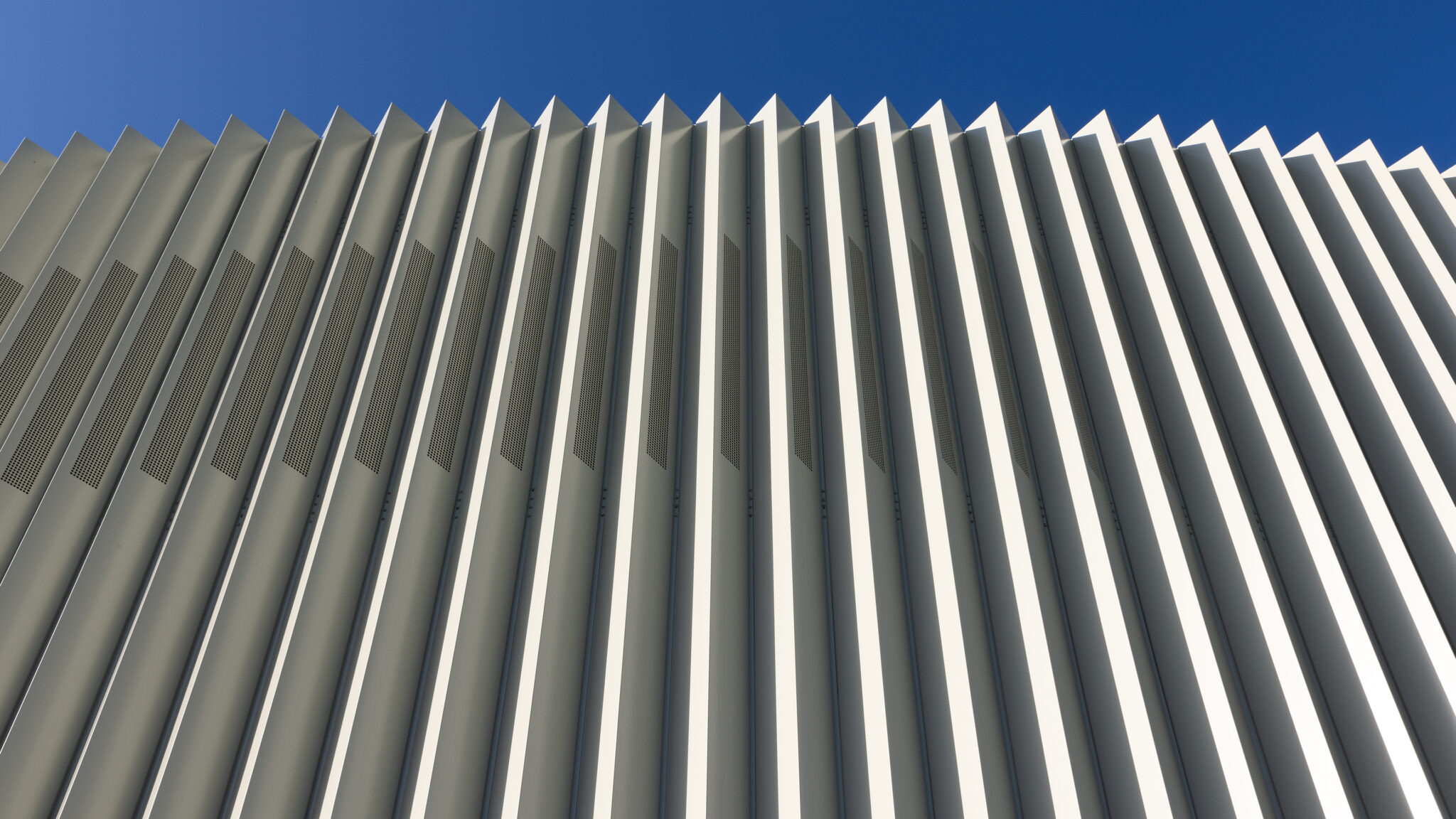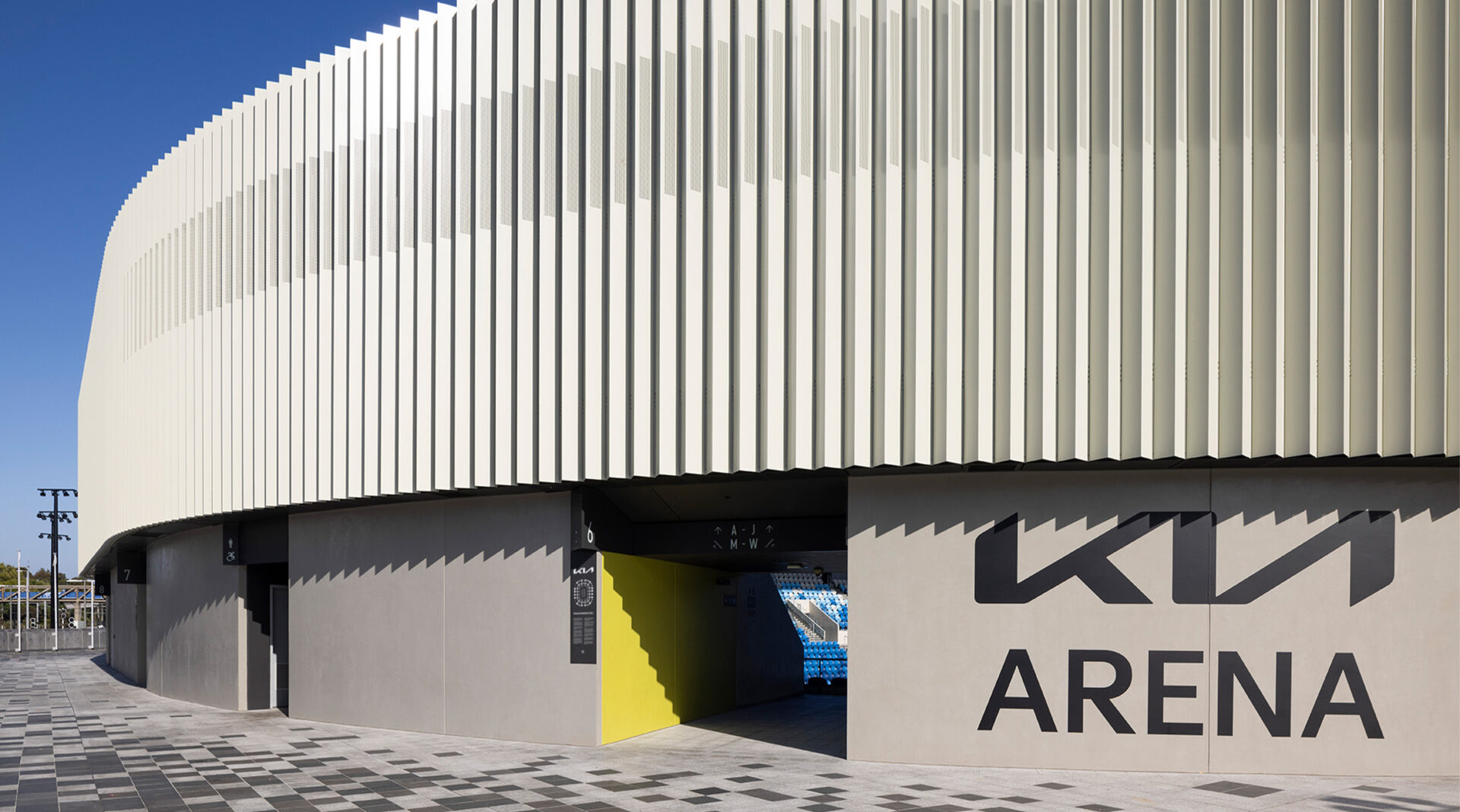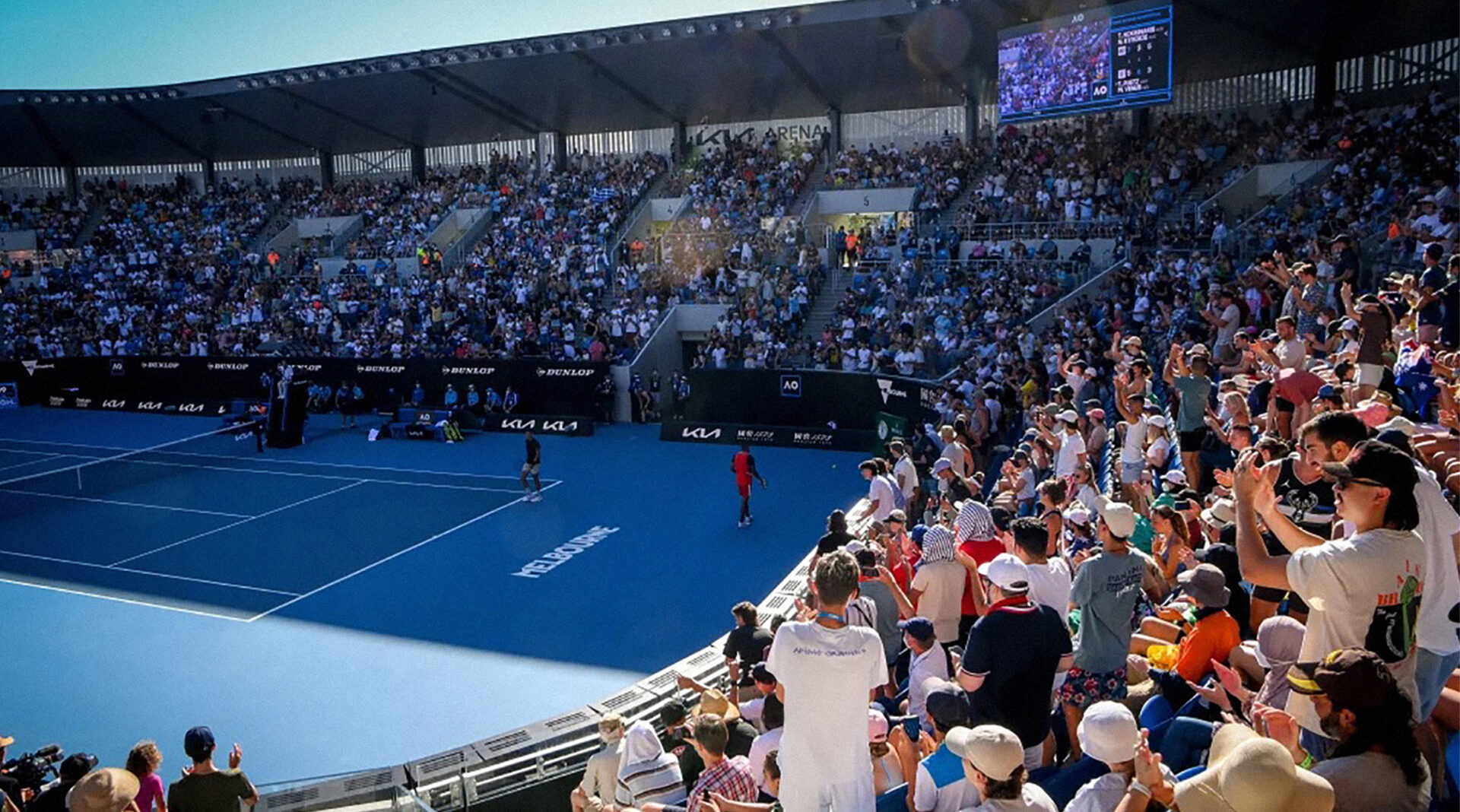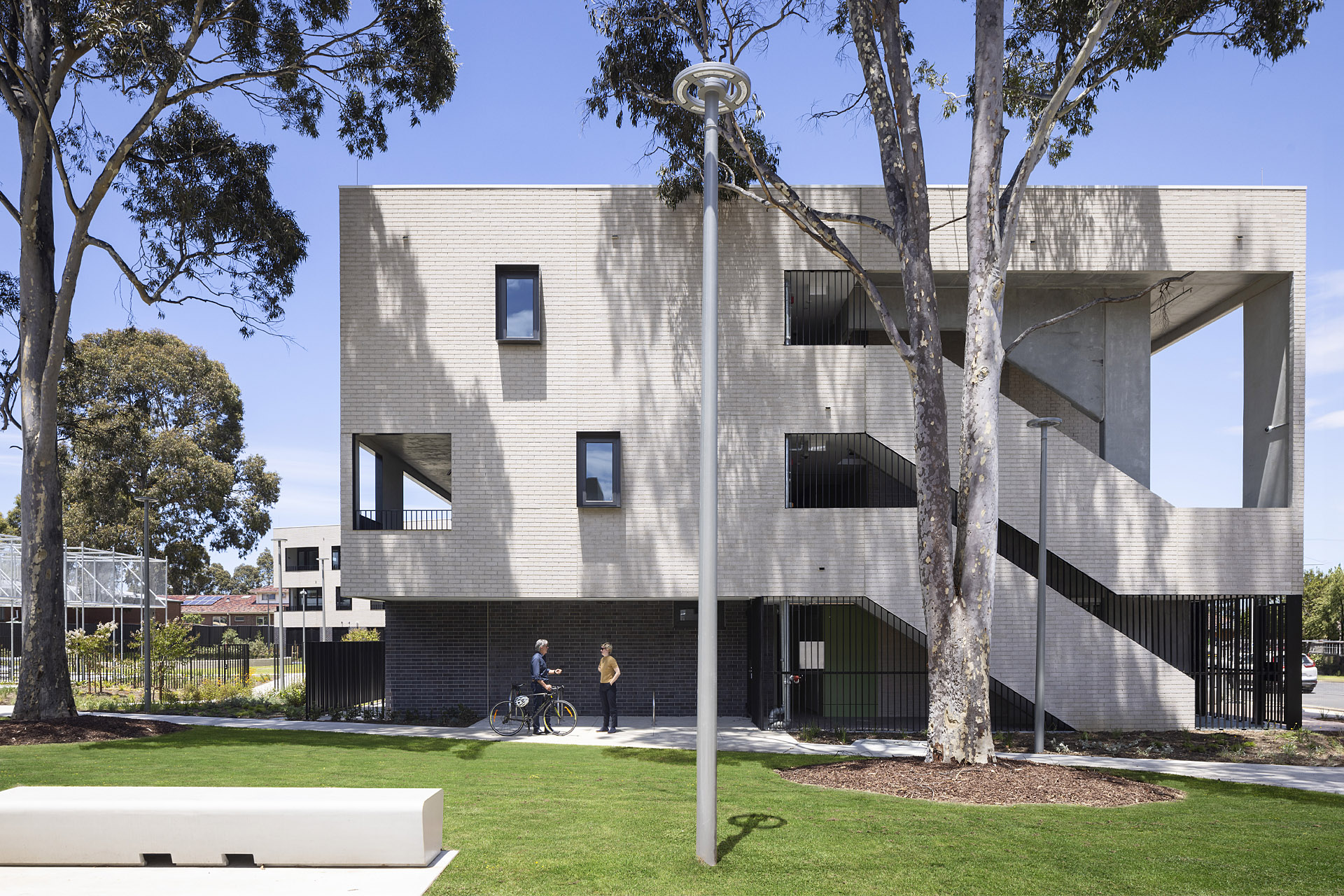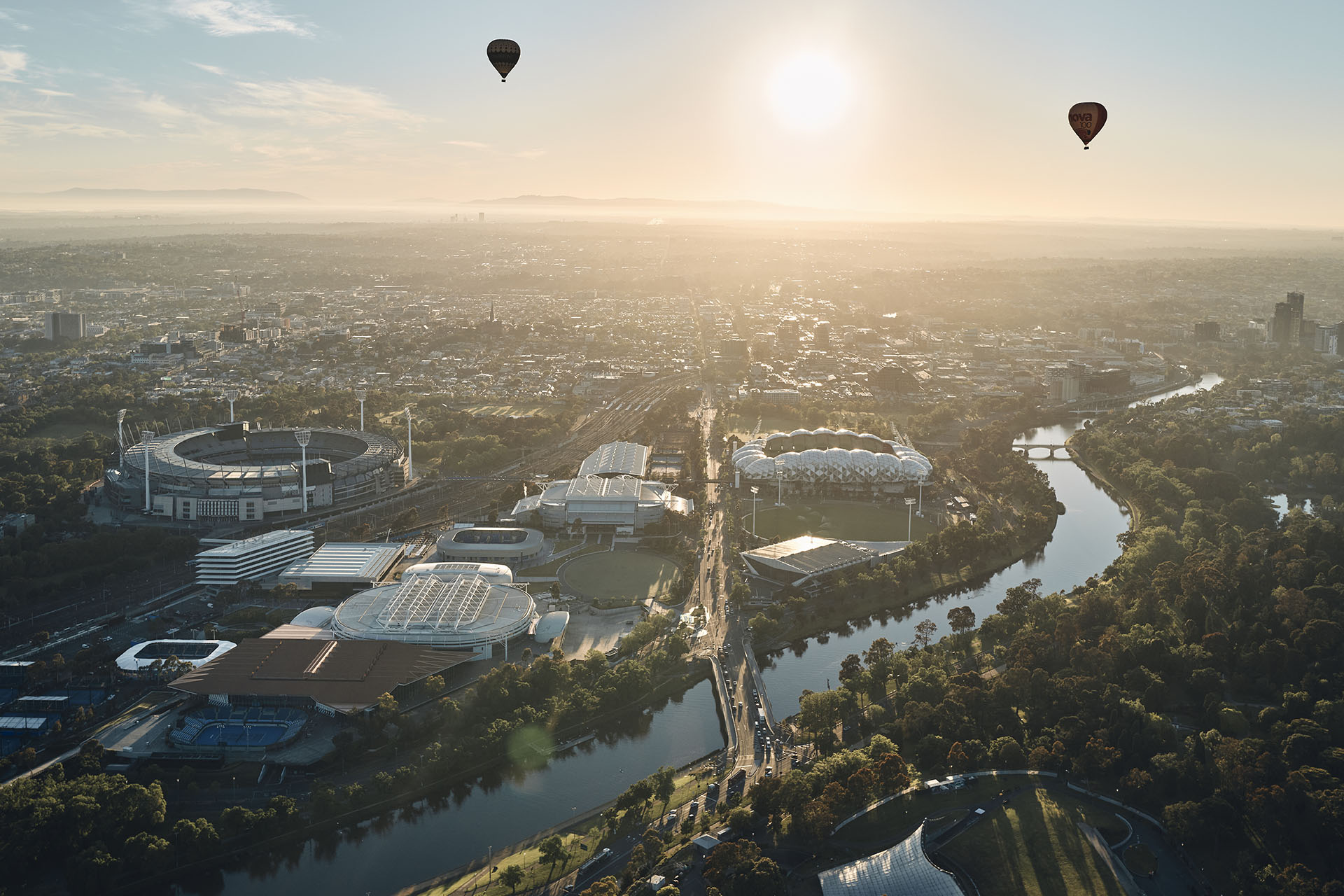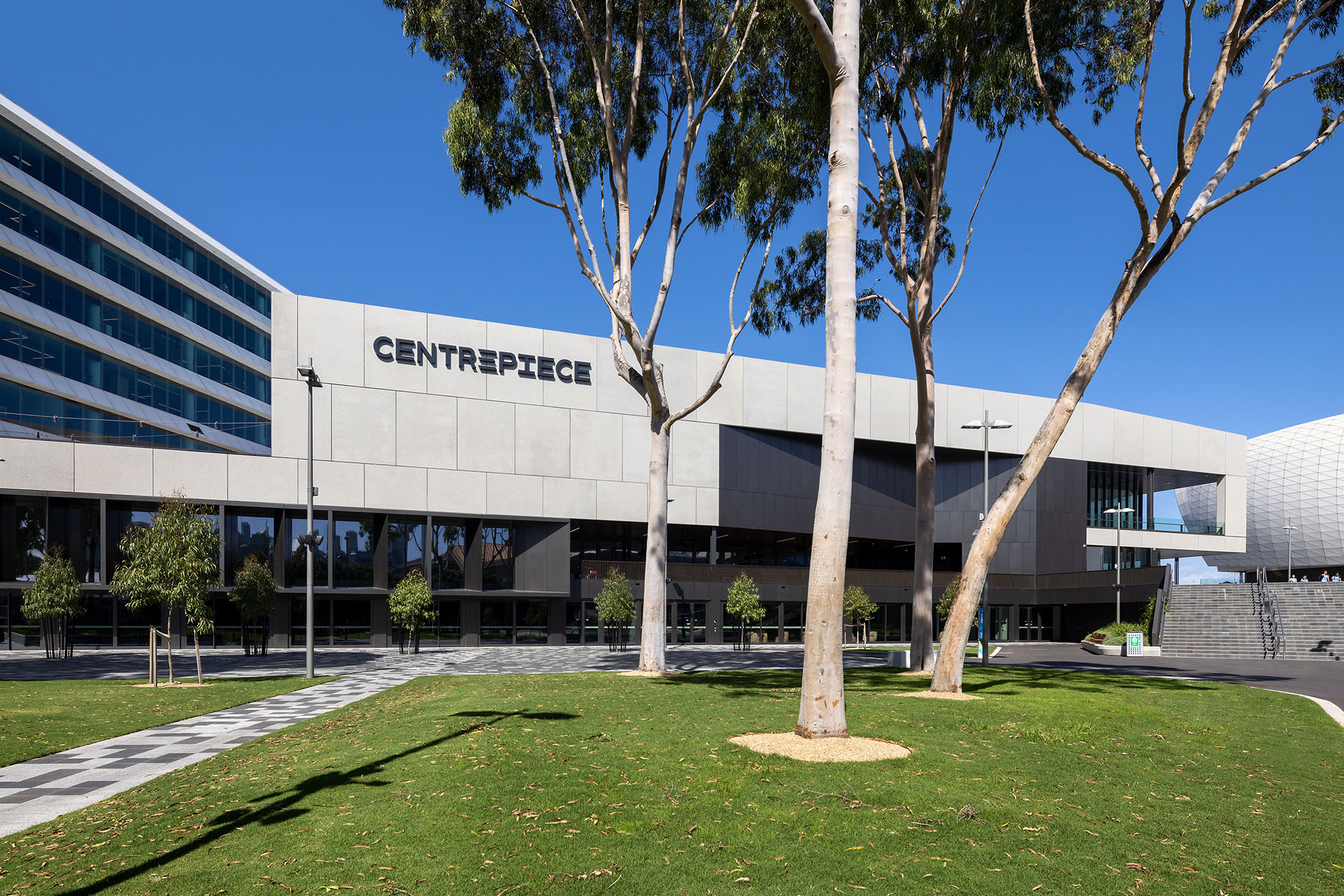Our concept for Kia Arena draws heavily from its central location in the Melbourne Park Precinct with a focus on the user experience and integration into the surrounding public realm. Designed for year-round use as a multipurpose events space, it features a removable section of seating to allow for a stage, and provisions to the bowl wall and roof line to allow for multiple event setups. The facilities at court level have been designed as fully functioning and universally accessible artist amenities.

With a modest height compared to the surrounding venues and infrastructure, its full size and capacity is only revealed upon entering from a series of entry passages surrounding the court. This sense of intrigue is strengthened by the glimpses of colour allowed through these entries.
From the outside, the arena is defined by two distinct bands. The base: a solid, polished plaster volume is disrupted only for programmatic elements. The steel cantilever of the roof balances maximum weather coverage against steel tonnage. We achieved the highest standard of broadcast sports lighting requirements by fine-tuning a solution for the leading edge of the cantilever to integrate the LED lighting.

Kia Arena made its debut as the ‘people’s court’ during this year’s Australian Open. The ease with which it was adopted by spectators, players and personnel alike is a testament to its success as a public building. It was no surprise to hear quad wheelchair player Dylan Alcott state his preference for the court and say he couldn’t wait to play on it in front of a full crowd.
We worked with RWA Sports Architecture to ensure that internally, the arena focusses on the action in the field of play at its centre. Each element; from the bowl profile, the seating layout, roof cover to the back of house circulation spaces was designed for an equal, in-the-round patron experience. Universal access was a key driver at every stage of the design process. Entrance from the concourse level ensures that the accessible and enhanced amenity seating is in the prime viewing spot. At least one percent of all the seats in the arena are wheelchair accessible, which is a rare achievement.





